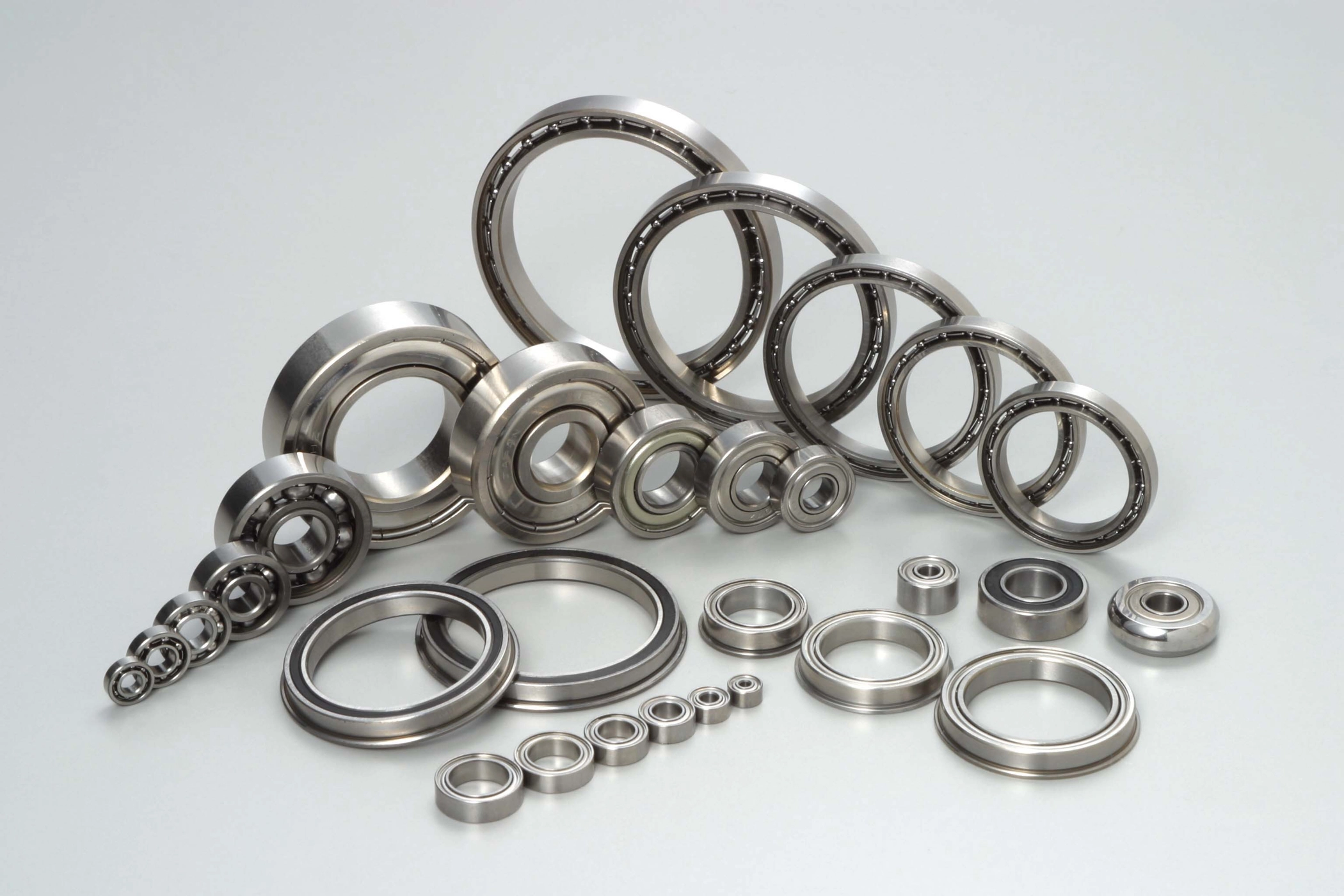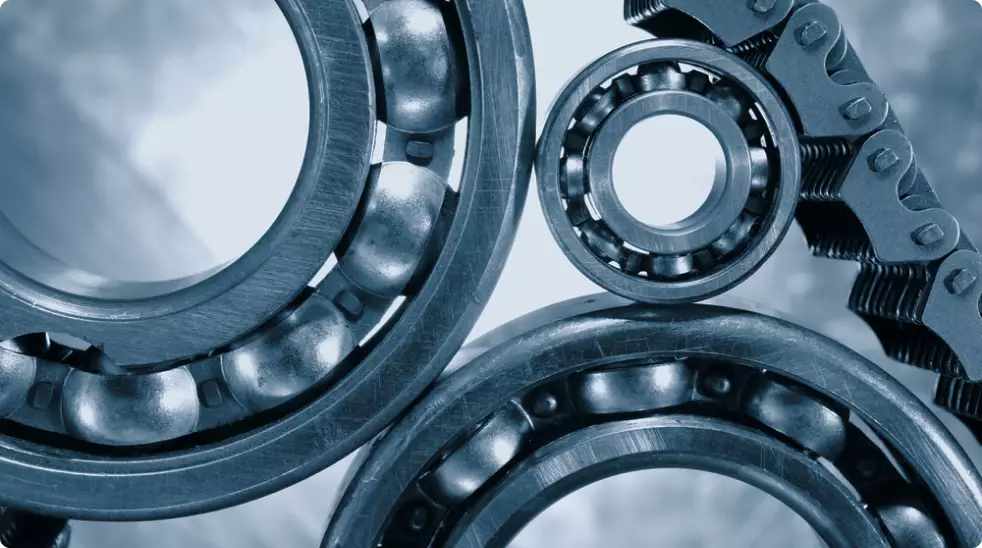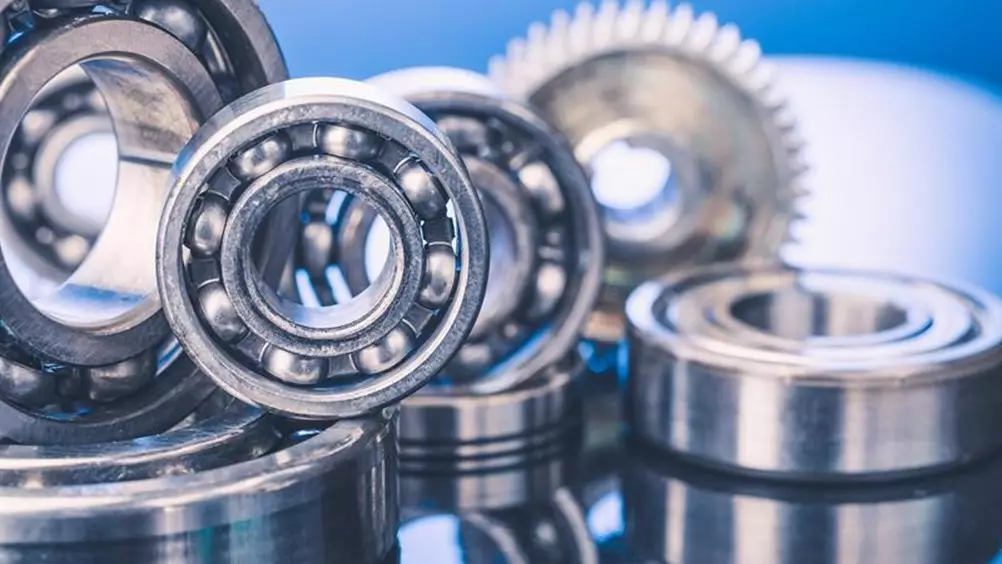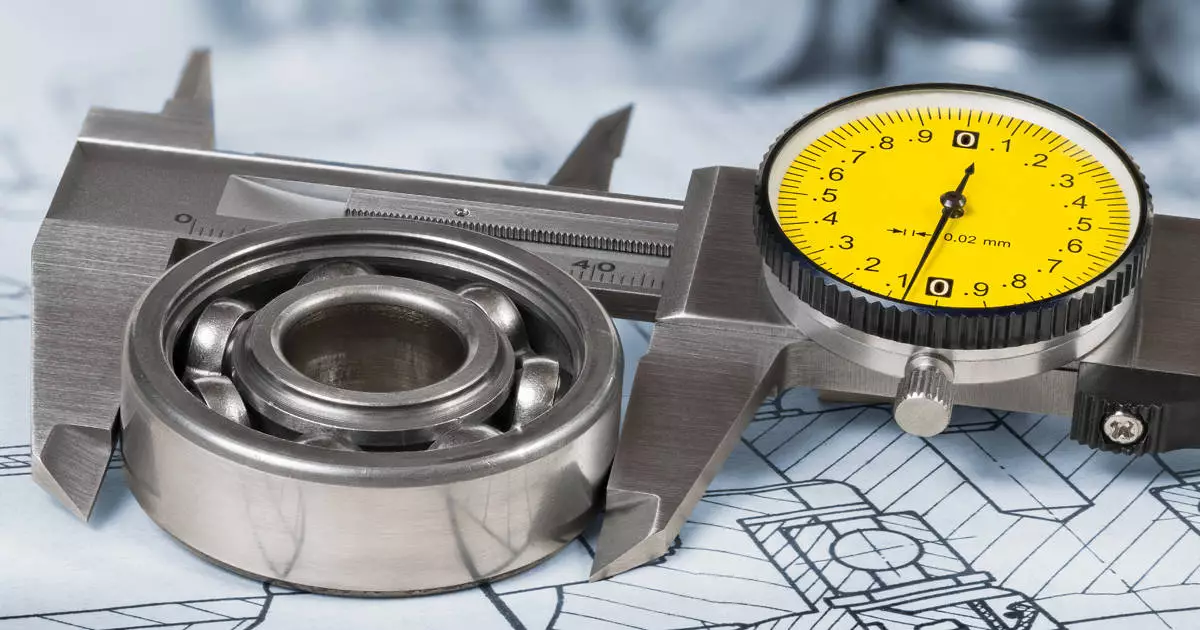
Determine Shaft and Housing Fits for Bearings
Proper installation of bearings is crucial for smooth operation and extended bearing life. A critical aspect of bearing installation is determining the appropriate shaft and housing fits. This article delves into the fundamentals of bearing and housing fits and provides a comprehensive understanding of bearing fit terminology.
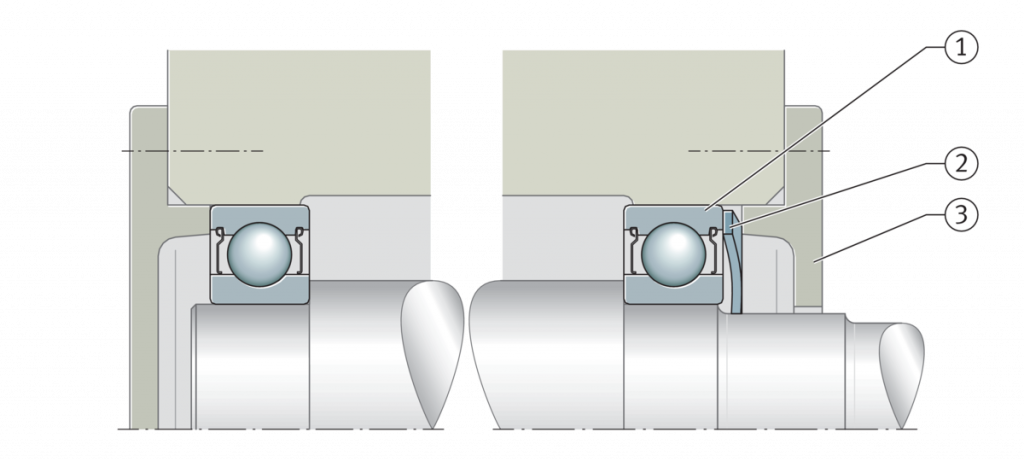
Basics of Bearing Fits
Ball bearings are always mounted on a shaft and into a housing bore. Fit is the spatial value of tightness or looseness between the bearing bore and the shaft and the bearing outer ring and the housing. Fits are classified as Clearance Fit, Intermediate Fit, and Transition Fit.
When bearings slip, it is referred to as “Creep.” Proper fits prevent bearings from experiencing “creep” by firmly securing the inner ring and outer ring on the shaft and in the housing. Proper fits help reduce vibration during rotation. When creep happens, heat generation and wear particles are created. Excessive heat causes the degradation of grease and destruction of ball retainers. Wear particles that migrate inside the raceways cause vibration and surface degradation including seizure. Incorrect fits may cause complete failure.
In the case of Interference Fits, the interference causes a change in radial internal clearance. You need to understand what the internal clearance is for a proper interference fit calculation.
When pressing the bearing with an interference (i), the inner ring groove diameter (d2) increases by an amount (δ). This value (δ) is also equal to the decrease in radial internal clearance. You can find the calculations in any good bearing catalog to determine the proper interference fit for the bearing you are considering.

Interference Fit of the Outer Ring to the Housing
Using a press fit with an interference (I) the outer ring groove diameter D1 decreases by an amount (∆). This amount (∆) is also equal to the decrease in radial clearance. Consult with the bearing manufacturers catalog to determine the fits based on radial clearance for the bearing you are interested in.

Securing with Adhesive
When the bearing is fitted to the shaft and housing with adhesive without interference, it is necessary to select the proper clearance to enhance the effectiveness of the adhesive. Please consult with the adhesive manufacturer, as the correct clearance depends on the adhesive. The roundness of the ring raceways could be changed because of the adhesive’s curing stress.
In general, clearance fits allow for easy assembly and disassembly of bearings but may cause excessive vibration and noise due to the looseness of the fit. Interference fits provide a compressed connection reducing the risk of slippage or misalignment.
The selection of the appropriate bearing fit depends on several operating factors, including operating speed, load, and temperature. Other factors to be considered are the material properties of the bearing and the surrounding components. To determine the optimal bearing fit, you must understand the specific bearing’s radial internal clearance. Radial internal clearance is the free space between the inner and outer rings minus the ball diameter. Often internal radial clearance is called play. Bearings will have both radial and axial play to consider in mounting procedures.
Transition fits provide a compromise between clearance and interference fits. They offer a looser fit than interference fits but a tighter fit than clearance fits. A transition fit can be determined by calculating the amount of clearance or interference required based on the operating conditions and the material properties of the bearing and the surrounding components.
Determining Shaft and Housing Fits for Bearings
Shafts and housings are critical components in mechanical systems. In this context, we will discuss the factors that should be considered when selecting or designing shafts and housings, including material selection, diameter, tolerance, surface finish, and other critical factors.
Understanding Shaft and Housing Specifications
One of the most important considerations when selecting a shaft or housing is the material. In general, the material should be based on its mechanical properties. Strength, hardness, and toughness, as well as its resistance to wear and corrosion.
Another consideration when selecting a shaft or housing is the diameter, which will be based on the forces and torques that the component will experience during operation. In general, the larger the diameter, the more resistant the shaft or housing will be to bending and other types of deformation. The required diameter can be calculated using formulas such as the Euler-Bernoulli beam or the torsion equation, which considers factors such as the material properties, the length of the shaft or housing, and the loads applied.
Tolerance is another factor to consider when selecting or designing a shaft or housing. Tolerance refers to the allowable variation in the diameter, roundness, or other dimensions of the component. The tolerance required will depend on the application, with tighter tolerances typically being required for high-precision applications, such as in aerospace or medical equipment. The required tolerance can be determined by considering the required accuracy of the application and the manufacturing capabilities available.
Surface finish is another critical factor to consider, as it can affect the performance of the component, particularly in high-speed applications. The surface finish refers to the roughness or texture of the surface of the shaft or housing. A rough surface can lead to increased friction and wear, while a smooth surface can reduce friction and increase efficiency. The required surface finish will depend on the application, with higher speeds generally requiring smoother surfaces. The surface finish can be measured using techniques such as profilometry or surface roughness testers.
Calculating Bearing Tolerances
The main factors to consider when calculating bearing tolerances include the bearing type, size, and operating conditions. The following steps can be taken to calculate bearing tolerances:
- Determine the bearing type: There are many distinct types of bearings, including ball bearings, roller bearings, and plain bearings. The type of bearing will influence the required tolerances.
- Determine the bearing size: The size of the bearing will affect the required tolerances, as larger bearings typically require larger tolerances to accommodate the greater forces and loads, they will experience.
- Determine the operating conditions: The operating conditions, such as speed, temperature, and load, will affect the required tolerances. For example, higher speeds or temperatures may require tighter tolerances to maintain proper alignment and prevent damage.
- Calculate the clearance or interference fit: The clearance or interference fit between the bearing and its mating surface will affect the required tolerances. Clearance is the gap between the bearing and mating surface, while interference is when the bearing is slightly larger than the mating surface. The required clearance or interference fit can be calculated using formulas or tables provided by the bearing manufacturer.
- Calculate the shaft and housing tolerances: The shaft and housing tolerances will affect the fit of the bearing and must be calculated based on the clearance or interference fit. The tolerances can be calculated using formulas or tables provided by the bearing manufacturer.
- Verify the tolerances: Once the tolerances have been calculated, they should be verified using measuring tools such as micrometers or gauges to ensure that they are within the required range.
Most manufacturers like SKF and FAG Schaeffler provide fit tables for housings and shafts. Connect to Schaeffler for deep groove ball bearing and mounted housings selection assistance below.
- Deep groove ball bearing mounting assistance
- Housing selection assistant
- Review bearing selection criteria
Conclusion
Determining the right shaft and housing fits for bearings is essential for optimal bearing performance and long life. By understanding the basics of bearing fits, calculating bearing tolerances, and selecting the right fit based on the bearing type and application, you can ensure that your bearings will operate smoothly and reliably. Use the expert tips outlined in this article to help you make the best choices for your machines.
Still have a question or need to discuss something? Contact us to get help.









 Short Rigid Couplings
Short Rigid Couplings Controlflex Couplings
Controlflex Couplings Jaw Couplings
Jaw Couplings Oldham Couplings
Oldham Couplings Bearing Locknuts – TCN
Bearing Locknuts – TCN Double Wide Shaft Collars
Double Wide Shaft Collars Heavy Duty Shaft Collars
Heavy Duty Shaft Collars International Series Shaft Collars
International Series Shaft Collars Keyed Shaft Collars
Keyed Shaft Collars Mountable Shaft Collars
Mountable Shaft Collars Quick Clamping Shaft Collars
Quick Clamping Shaft Collars Set Screw Shaft Collars
Set Screw Shaft Collars Thin Line Shaft Collars
Thin Line Shaft Collars Threaded Shaft Collars – Pacific International Bearing Products
Threaded Shaft Collars – Pacific International Bearing Products Two-Piece Shaft Collars
Two-Piece Shaft Collars Friction Bearing Universal Joints
Friction Bearing Universal Joints Needle Bearing Universal Joints
Needle Bearing Universal Joints